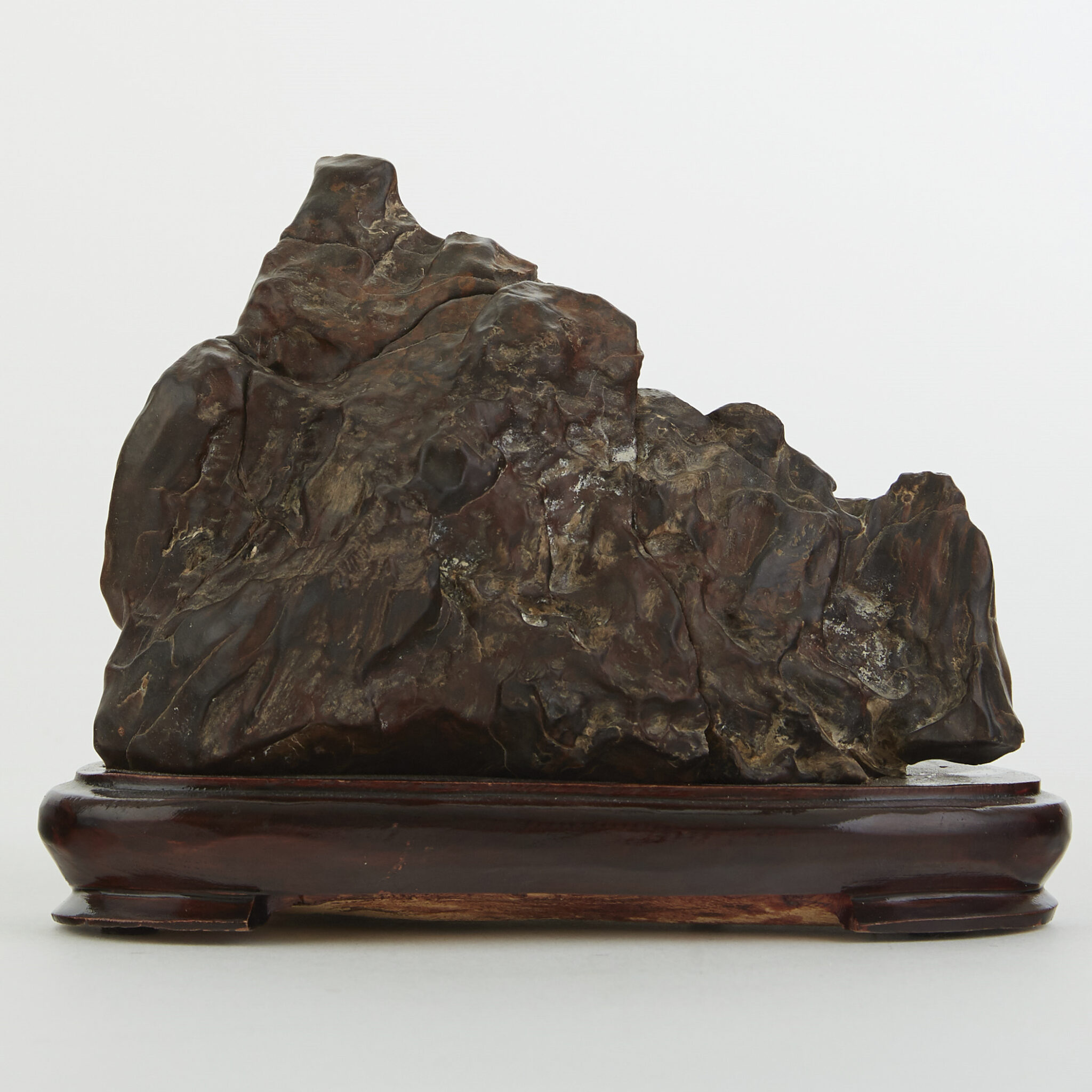
Scholar’s Rocks
Interested in selling a piece of Scholar’s Rock?
We have received top dollar for Scholar’s Rocks. Auction is the best way to quickly and transparently get maximum dollar for your artwork.

Ling Bi Stone, sold in Fine Art and Asian Art, September 21, 2019.
About Scholar’s Rocks
Scholar’s rocks, or Gōng shí (供石) in Chinese, are naturally occurring rocks that are often sanded, carved, polished, and altered in some way for a desired appearance and have been cited as a source of inspiration by many Chinese writers throughout history. Also known as fantastic rocks and spirit stones, they are often found in caves filled with water and made from karstic limestone and petrified wood. Stones are prized for a variety of features: textured surfaces, dramatic forms, awkward asymmetry, and glossiness. Some rocks are also admired for their resemblance to mountains and mythical creatures. Mountainlike rocks are admired because they symbolize a miniature world, a microcosm of the universe to which scholars turn for inspiration. Stones that are massive and colorful or sensual in shape with somber coloring are seen as perfect, depending on tastes.
There are three main sources of quality stones in China: Lingbi, Yingde, and Lake Taihu. Stones from Lingbi tend to have glossy and dark surfaces, while stones from Yingde tend to have perforated surfaces. Pitting and corrosion caused by the water in the caves causes the limestone to have cavities and hollowed surfaces. Based on Chinese aesthetics for scholar’s rocks, stones that have dimpled surfaces are more prized than more smooth stones because the hollows in the rocks contrast the solidity of the stone, making it more dramatic. Stones that are from Lake Taihu are the most prized due to their unique shapes.
Scholar’s rocks have a long history in Chinese culture. They have been found buried in tombs dating to the Neolithic Age, 7,000 years ago. In the late Tang Dynasty (618-907 CE), the four principal aesthetic criteria were defined to create a standard for stones that would be used and featured in gardens and studios; stones were judged by their openness, perforations, wrinkling, and thinness. By the early Song Dynasty (960-1279 CE), we begin to see the influences of the rocks in Chinese literature and paintings. Emperor Huizong Mi (reigned from 1101-1126) was an avid collector and painter of gōng shí. Huizong Mi was not alone–many emperors revered scholar’s rocks. Li He, the associate curator of Chinese art at the Asian Art Museum in San Francisco, said, “The stones have always had imperial connotations.” Mi Fu (1051-1107), a prominent Chinese painter, poet, and calligrapher composed essays on scholar’s rocks, as did many other artists. Du Wan (12th c.) wrote a comprehensive catalogue, Yunlin Shipu, that praised the stones.
Stones of all sizes have always been collected and admired. Smaller rocks were collected as desk and table ornaments for scholarly studios while larger stones were used as decorations in gardens to create a small landscape. Eventually the pairing of rocks and plants became a favored pictorial genre which suggested garden settings. Rocks were paired with different plants to convey certain symbolic meanings, such as bamboo, meaning moral purity, and peonies, meaning wealth. Paintings of these rocks began to appear more often and eventually the aesthetic ideals between fantastic rocks and painting were indistinguishable. To quote Liang Jiutu (1816-1880), a Chinese artist and writer, “If the rock does not seem like a painting by the power of nature, then you shouldn’t choose it.”
Scholar’s rocks are still admired today. Many people collect them, and they continue to inspire art and writing. Chinese sculptor Zhan Wang (展望) creates stainless steel gōng shí. He took the concept of new technologies and combined it with traditional Chinese art, creating a curious juxtaposition. He sets large artificial rocks outside of entrances of modern buildings, much like having large ornamental rocks in Chinese gardens and gateways, and by doing so he pushes traditional Chinese aesthetics into contemporary art. To Wang, his sculptors depict Chinese history in the postmodern world. It seems evident that even through the test of time, gōng shí, or scholar’s rocks, still influence artists and writers today.
If you have a scholar’s rock you would like to sell or have appraised, please get in touch for a free auction estimate.
